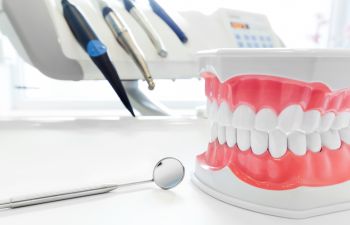
The perfect smile is created when many factors fall into place. While the condition of your teeth and gums are two of the highlights of your smile, there are other factors as well. The size of your teeth and the amount of gum tissue that shows when you smile also affect the appearance of your smile. Too much gum tissue can make your teeth look small and stubby. Your smile may seem unbalanced and to “gummy.” This look can be altered with gum contouring.
An Effective Cosmetic Procedure for Uneven Gums
Gum contouring is not considered a necessary procedure by itself. When performed as an aesthetic smile improvement, it is an elective cosmetic procedure. Gum contouring can also be part of required periodontal procedures. It is used to lengthen the crowns of teeth, reduce pockets and for regenerative procedures. When used to recontour gum recession or trim overgrown gum tissue that is covering part of the tooth crown, the procedure is not considered cosmetic.
The Causes of Uneven Gums
Gums that are too high or too low can be caused by a few different conditions. Genetics play a role for some people. Others may have a health condition that can cause gum overgrowth. Sometimes this condition is a result of certain prescription drugs.
In the case of gum recession, your teeth may look too long. Gum recession occurs when the gums shrink and expose more of the root of the tooth. Gum recession should be addressed because it can lead to dental decay. It can also lead to the loss of teeth. In many instances, gum recession occurs as a symptom of periodontal disease. Advanced gum disease causes deterioration of gum tissue and bone.
The Procedure
Gum contouring is performed to expose more of the tooth so teeth that seem stubby and short can look longer and more in proportion. Gum contouring is a surgical procedure. The dentist will use a laser or another type of cutting device to remove some of the gum tissue to expose more of the tooth enamel. This procedure usually does not take a long time. Most patients have their gum contouring completed in one visit.
Local anesthetic is used to numb the gums so the discomfort involved is minimal or non-existent. After the procedure, you may experience some soreness in the area that was contoured. With diligent home care, your gums should heal quickly.
When gum contouring is necessary to help repair periodontal damage, there may also be other work involved. In some cases, the damage caused by periodontal disease may require removal of damaged bone tissue. When this is the case, more extensive anesthesia may be required. Healing from a more involved procedure will also take a longer time.
The Aesthetic Benefits of Gum Contouring
Benefits of gum contouring include a more aesthetically pleasing smile. When teeth that formerly appeared short and stubby have more enamel exposed, they look longer. The gums look more even and the result is a better-looking smile.



